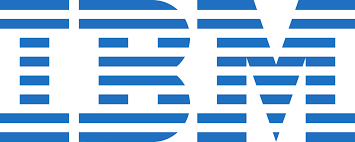Modeling Threats in a Modern Age
Securing cybersecurity systems from design to deployment using modern threat modeling techniques

Lectures -25
Duration -3 hours
Lifetime Access

Lifetime Access
30-days Money-Back Guarantee
Get your team access to 10000+ top Tutorials Point courses anytime, anywhere.
Course Description
Whether translating the visual representation of attack trees onto the mixed-methods of continuous threat modeling to embed it into your CI/CD pipelines, or to provide practical implementation nuggets, this course has you covered with practical examples and demonstrations. You will also be trained to interact with Threagile's YAML files, set up automated detection of threats, and create a mitigation strategy tailored to effectively alleviate risk as it evolves.
In addition to the unique challenges of securing cloud environments and diving into details around identity management, configuration security, and responsibility sharing, we will look at the Cloud Security Alliance's innovative threat modeling cards to visually consider threats, vulnerabilities, and controls associated with using systems based in the Cloud. In this expansive journey, participants will achieve a comprehensive understanding of threat modeling strategies to integrate security proactively into development life cycles. Leverage collaborative methods and industry best practices to build a secure system against evolving cyber threats.
Enhance your security skillset and protect future systems with confidence by attending this comprehensive threat modeling class.
You will learn about:
1. Advanced Understanding: A comprehensive understanding of attack trees, continuous threat modeling, Threagile, and cloud threat modeling that enables them to manage complex threat landscapes.
2. Practical Application: Hands-on experience in translating an attack tree's graphical representation, embedding continuous threat modeling into CI/CD pipelines, interacting with Threagile's YAML, and automating threat detection.
3. Customized Strategies: The capability to create customized mitigation strategies for a dynamic risk environment, ensuring systems are built to keep up with evolving threats.
4. And much more!
Goals
By the end of this course you will understand:- Foundational Concepts: Understanding the core elements of threat modeling, including assets, threats, vulnerabilities, and risks.
- Methodologies: Exploring various threat modeling methodologies like STRIDE, DREAD, Attack Trees, MITRE ATT&CK and how to apply them in different scenarios.
- Practical Application: Applying threat modeling techniques to real-world scenarios, software systems, or network architectures.
- Tool Usage: Familiarity with tools and software used in threat modeling to streamline the process and enhance efficiency.
- Risk Assessment: Learning to evaluate and prioritize risks based on their likelihood and impact, enabling effective risk mitigation strategies.
- Integration with SDLC: Understanding how to integrate threat modeling into the software development lifecycle (SDLC) for proactive security.
- Industry Best Practices: Studying industry best practices, standards, and compliance requirements related to threat modeling in various sectors.
- Emerging Trends: Staying updated with evolving threats, new attack vectors, and the latest approaches to threat modeling
Prerequisites
- Basic Cybersecurity Knowledge: Understanding foundational concepts in cybersecurity, such as network security, encryption, access controls, and common attack vectors.
- Software Development Understanding: Familiarity with software development processes, architectures, and common programming languages to comprehend the software security aspects.
- System Architecture Awareness: Knowledge of system architectures, including cloud computing, distributed systems, or microservices, to assess vulnerabilities across diverse environments.
- Networking Fundamentals: Basic understanding of network protocols, architectures, and components to comprehend security implications within networked environments.

Curriculum
Check out the detailed breakdown of what’s inside the course
Introduction
2 Lectures
-
Introduction 01:26 01:26
-
Understanding the basics 17:23 17:23
Threat Modeling Methods and Types
7 Lectures

Advanced Threat Modeling
5 Lectures

Dealing with the Findings
4 Lectures

Conclusion
1 Lectures

Hands-on Activities
6 Lectures

Instructor Details

Derek Fisher
Course Certificate
Use your certificate to make a career change or to advance in your current career.

Our students work
with the Best


































Related Video Courses
View MoreAnnual Membership
Become a valued member of Tutorials Point and enjoy unlimited access to our vast library of top-rated Video Courses
Subscribe now
Online Certifications
Master prominent technologies at full length and become a valued certified professional.
Explore Now


 Updated on Nov, 2025
Updated on Nov, 2025
 Language - English
Language - English